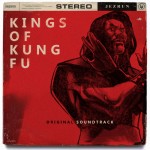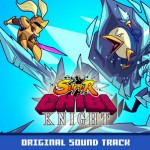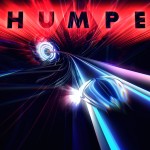Over the past few months, there were a fair number of gaming conventions and festivals being held. MAGFest had a new event with MAGFest 8.5 in Washington DC; Portland, Oregon had the XOXO Festival, covering arts and technology; and of course PAX Prime was held at the end of August in Seattle, Washington. There was however another small festival that took place on September 14th in Boston, Mass. This was the Boston Festival of Indie Games.
This was the third year that the Boston Festival of Indie Games has been running. Held only on one day, the event is focused on board games and digital games from the local Boston indie game scene. The event also hosts lectures on various industry subjects, with a diverse collection of guests. This year had plenty of great stuff to see and do. While it was impossible to see and cover absolutely everything that happened this year, I would like to give a brief overview of the event. So with that said, let’s take a look at what the festival had on offer this time around.
The first few areas that I ended up checking out were the Digital Game Showcase and the Tabletop Showcase. A majority of the booths at the Tabletop Showcase had their games on display and there was almost always a group playing through a round of these new or work-in-progress games. I unfortunately didn’t get to spend a lot of time in this area, but there was a good amount of diversity from what I saw. Games about creating stories or movie scripts, espionage and spy games, and some that were in categories of their own. There were also a few booths selling tabletop products, like hand made dice boxes.
The Digital Game Showcase was where I spent most of my time. One of the things that surprised me was how many game titles I was actually familiar with. There were a handful of better known indie games like Catlateral Damage, but there were also some like Crystal Brawl, Jungle Rumble, and Tumbleweed Express that I’ve seen at previous events. It was good to see some familiar titles and even see how much the games had progressed in their development. Just as with the Tabletop Showcase, there was a wide range of diversity among the digital games. That Rock Paper Scissor Game is a top down arena fighter that has you play as Rock, Paper, or Scissors and attempt to defeat the one player your strong against; the previously mentioned Tumbleweed Express is a combination rail-shooter and tower-defense game, in which you defend a moving train against waves of enemies; and then there were games like Alien Makeout Simulator, a virtual reality game where you (no surprises from the title) attempt to make-out with a multi-lipped alien creature. Yes, that last one is real; I swear to you I did not make that up. That’s just a sampling of some of the games that were on display. Each game I tried out was interesting and unique and I honestly wish I had more time to check out everything available at the showcase.
The Boston Festival of Indie Games also hosted a number of interesting panels. These were all located in one of the MIT buildings on the other side of the campus. While it was a bit of a hassle to find, once there all of the panels were in the same small area, making it very easy to go from one talk to the next. The first panel that I attended was “Game Devs: The Next Generation,” where several participants of the MassDiGi Summer Innovation Program talked about their experiences of making games from start to finish in an eleven week period. In particular, they discussed some of the mistakes they made and what they learned as a result of designing and building new games. The games that they worked on during the program were also available to see on the Digital Game Showcase floor, so it was interesting to see the results of their work firsthand.
The second talk I attended was much more relevant to the game music world. Composer Xiao’an Li held a panel titled, “How Do I Make This Composer Do What I Want?.” The talk was intended to explain and outline to game developers how to communicate and work with musicians and composers. But in an interesting twist, and to my surprise, a majority of the audience for this panel actually consisted of composers, rather than programers and designers. This shifted the focus of some of the discussions, but there was a lot of useful information presented, regardless of what your background was. Li went through and explained his process for writing and creating music for game projects. He pointed out a few models that composers usually use for negotiating rates and fees, which will vary depending on whether they are working for a AAA studio or a small indie team. Overall it was a great learning experience, especially when hearing the types of questions that developers and game makers had about music.
This year at the Boston Festival of Indie Games there were two Keynote speakers. One of these guests was Ashley Burch, an accomplished voice actor and the co-creator of the show “Hey Ash, Watcha Playin’?”. She was joined for the Keynote by Sarah Elmaleh, another experienced voice actor who has also done work as a games journalist. Their Keynote was titled “The End of the Everyman: Creating Engaging Protagonists Using Specificity.” The central focus of the talk was the idea that silent protagonists, no matter what their gender or identity, don’t create the most engaging experiences for the player. Their main thesis was centered on the idea that more fleshed out or more fully realized characters make for more engaging player experiences. Even small details, or elements of specificity, about the characters’ lives or personalities can help build a better sense of engagement and immersion, even though it creates a wall of separation between the character and the player’s identities. Part of this talk also discussed a version of the “Immersive Fallacy,” specifically that the player must be made to believe they are the main character within the world in order to achieve maximum immersion. While it’s often believed that a silent protagonist will make it easier for players to assume a role, a well written character allows the players to engage and empathize with ideas and characters on a much deeper level. The Keynote provided some interesting points and insights that I hadn’t considered before, and it prompted some good discussions about game characters and game writing during and after the Keynote and Q&A.
Sarah Emaleh and Ashely Burch presenting the BFIG Keynote
Last but not least there were the 2014 Figgies Awards. The winners of these awards were determined by festival attendees voting for their favorite games for each category. Categories included Stunning Sound, Visual Art, and Single Player Game Design. The tabletop games had categories as well for Best Game, Best Artwork, and Best Innovation. The previously mentioned Alien Makeout Simulator came away with the Fabulous Flow: Single Player Game Design award, while the Epic Epic: Narrative/World Building award was given to the game Albino Lullaby. You can check out the full list of winners from this year and the previous years here.
Overall, I was impressed with this relatively new festival. It’s only been going for three years but it’s already picking up steam and growing every year. It also seems to be getting more attention from the press, as I met a lot more game journalists walking around the festival this year. There were some great games on display and plenty of variety in their design. The talks and panels were also a blast to attend, not to mention informative. If you live in the New England area, definitely consider checking out this festival when it happens next fall. It’s a cool one day event with plenty to see and experience. The Boston Festival of Indie Games is definitely worth your time.
Tags: BFIG, Boston Festival of Indie Games, Games, Indie Games, Panels, Tabletop









































